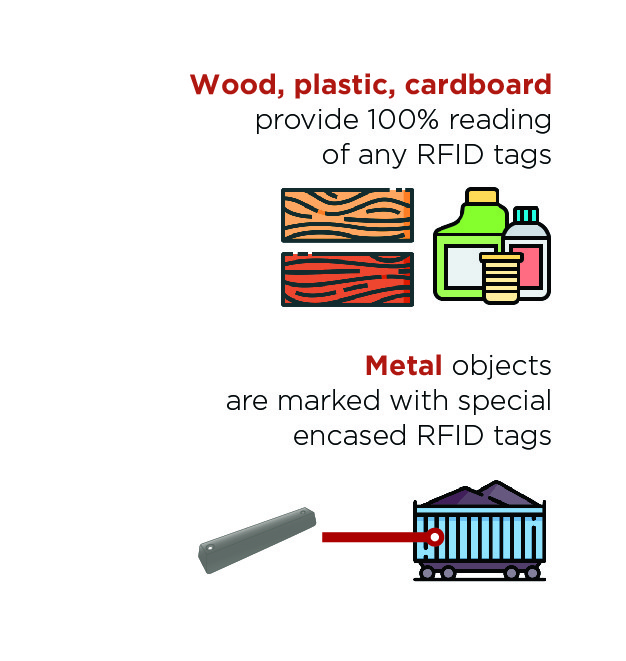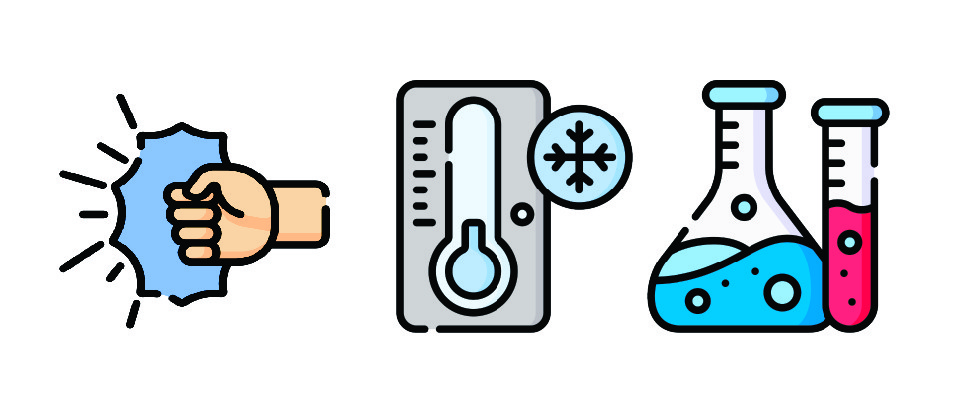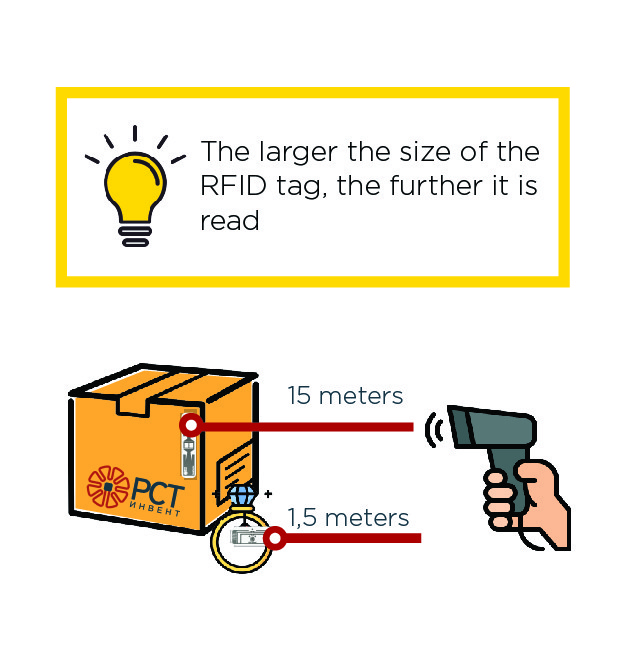Blog
Checklist: Self-selection of RFID tags for a project of any complexity
Today, the RFID market is represented by a wide variety of different RFID tags. But which one is right for your project? When choosing «the one» label, several factors must be taken into account: performance, material of the object to be marked, environmental conditions, and much more.
Choosing the “wrong” RFID tag can lead to dire consequences, and sometimes to terrible financial costs. We will tell you how by answering only 5 questions, you can independently choose the perfect tag for your project!
Let’s go!
01. What is the object to be marked made of?

As a rule, 100% error-free reading of an RFID tag is ensured when identifying products made of plastic, wood or cardboard (paper), that is, on any dielectric surfaces. The situation with the identification of metal-containing objects is more complicated, since the magnetic field of the metal causes electromagnetic interference that adversely affects the performance of RFID tags.
Tags for metal objects are made in sealed cases, which exclude direct interaction of the tag chip with the metal surface. For example, the PatchTag RFID tag has not only a high-strength housing, but also due to its special design provides a reading range of up to 35 meters, even in the most adverse environmental conditions.
02. In what conditions will the object to be marked be used?
It is very important to correctly assess the environmental conditions in which the RFID tag will be used, as this can greatly affect the reading results. Should it be resistant to scratches and impacts, is it necessary to withstand a certain temperature, is it necessary to be resistant to chemical processing?

03. What should be the reading range of an RFID tag?

The reading range of an RF signal directly depends on the size of the RFID tag, that is, the larger its size, the further it is read. For example, in warehouse logistics, it is necessary to be able to read objects located on the upper racks of the warehouse. For such purposes, it is advisable to use a fairly large RFID tag CandyTag, since its reading range is 15 m and it makes it possible to identify an object without removing it from the shelf. If the object of marking itself is small, for example, jewelry, and identification is carried out at a sufficiently close distance, then the RFID tag must also be of the appropriate size, for example, WinnyTag is a miniature tag that provides a reading range of up to 1.5 meters, and when it integrates perfectly into a jewelry tag.
04. How to attach an RFID tag to an object?
The method of attaching the tag depends on the material and shape of the object to be marked, as well as on the environmental conditions.
Some RFID tags have an adhesive backing that is useful for labeling books, boxes, etc. At the same time, other tags (packaged) have holes for fastening with screws or cable ties, for example the IT-2 RFID tag, which is perfect for marking reusable containers.
.
05. What information will be stored in the RFID tag memory?
The ability to save additional data on an RFID tag depends on the type of memory. For the implementation of projects based on radio frequency identification technology, tags are mainly used, with the possibility of one-time entry of information about the object to be marked. For example, when labeling clothes, an identification code is recorded in the tag memory, which cannot be changed, and by which you can determine the type of product, size, color, etc. And to automate production processes, it is necessary to be able to repeatedly rewrite information in the memory of an RFID tag for fixing information about the passage of the corresponding stage of production and instant receipt of reliable data even in the absence of communication with the server.

Among the huge selection of RFID tags, following this guide, you can easily find an option that perfectly meets all the necessary criteria.
And if you still have doubts about your choice, RFID experts “RST-Invent” will give you a personal comprehensive consultation on the selection of tags, taking into account the individual characteristics of your particular project.


